Content:
Fast standby power consumption and short battery life
Accu
| device | Accu-type | Accu replaceable? | Accu capacity |
| Gigaset GS80 | Lithium-ion accu | yes | 2000mAh / 3,7V |
| Gigaset GS100 | Lithium-polymer accu | yes | 3000mAh / 3,85V |
| Gigaset GS110 | Lithium-polymer accu | yes | 3000mAh / 3,8V |
| Gigaset GS160 | Lithium-ion accu | yes | 2500mAh / 3,8V |
| Gigaset GS170 | Lithium-ion accu | yes | 2500mAh / 3,8V |
| Gigaset GS180 | Lithium-polymer accu | yes | 3000mAh / 3,85V |
| Gigaset GS185 | Lithium-polymer accu | no | 4000mAh / 3,85V |
| Gigaset GS190 | Lithium-polymer accu | no | 4000mAh / 3,85V |
| Gigaset GS195 | Lithium-polymer accu | no | 4000mAh / 3,85V |
| Gigaset GS195 LS | Lithium-polymer accu | no | 4000mAh / 3,85V |
| Gigaset GS195 Pummelphone | Lithium-polymer accu | no | 4000mAh / 3,85V |
| Gigaset GS270 | Lithium-polymer accu | no | 5000mAh / 3,8V |
| Gigaset GS270 plus | Lithium-polymer accu | no | 5000mAh / 3,8V |
| Gigaset GS280 | Lithium-polymer accu | no | 5000mAh / 3,85V |
| Gigaset GS370 | Lithium-polymer accu | no | 3000mAh / 3,8V |
| Gigaset GS370 plus | Lithium-polymer accu | no | 3000mAh / 3,8V |
| Gigaset GX290 | Lithium-polymer accu | no | 6200mAh / 3,85V |
| Gigaset GX290 plus | Lithium-polymer accu | no | 6200mAh / 3,85V |
| Gigaset GX290 PRO | Lithium-polymer accu | no | 6200mAh / 3,85V |
| Gigaset GS290 | Lithium-polymer accu | no | 4700mAh / 3,85V |
| Gigaset GS3 | Lithium-polymer accu | yes | 4000mAh / 4,4V |
| Gigaset GS4 | Lithium-polymer accu | yes* | 4300mAh / 4,4V |
| Gigaset GS4 senior | Lithium-polymer accu | yes* | 4300mAh / 4,4V |
| Gigaset GS5 | Lithium-polymer accu | yes | 4500mAh / 4,4V |
| Gigaset GS5 Lite | Lithium-polymer accu | yes | 4500mAh / 4,4V |
| Gigaset GS5 senior | Lithium-polymer accu | yes | 4500mAh / 4,4V |
| Gigaset GS5 PRO | Lithium-polymer accu | yes | 4500mAh / 4,4V |
| Gigaset GX4 | Lithium-polymer accu | yes | 5000mAh / 4,4V |
| Gigaset GX4 PRO | Lithium-polymer accu | yes | 5000mAh / 4,4V |
| Gigaset GX6 | Lithium-polymer accu | yes | 5000mAh / 4,4V |
| Gigaset GX6 PRO | Lithium-polymer accu | yes | 5000mAh / 4,4V |
| Gigaset GS6 | Lithium-polymer accu | yes* | 5300mAh / 4,4V |
| Gigaset GS6 PRO | Lithium-polymer accu | yes* | 5300mAh / 4,4V |
* Contrary to the wording commonly used in the media, the replaceable battery of the GS4/GS4_senior and GS6 / GS6 PRO is not a classic "exchangeable battery", but a battery that can be replaced by the customer with a new battery at the end of its life. Instructions on how to replace the battery can be found in the operating instructions.
https://www.gigaset.com/de_de/cms/service/downloads.html
The appliance is not designed to be used when the battery needs to be replaced.
Usetime
| device | Standby time | Talk time | Multimedia | |||
| 1x SIM | 2x SIM | 2G | 3G/4G | Play music | Play video | |
| Gigaset GS80 | up to 380 h | up to 270 h | up to 9,5 h | up to 6,5 h | up to 13 h | up to 3,5 h |
| Gigaset GS100 | up to 550 h | up to 425 h | up to 35 h | up to 17 h | up to 80 h | up to 10 h |
| Gigaset GS110 | up to 526 h | up to 400 h | up to 20 h | up to 5 h | up to 42 h | up to 10 h |
| Gigaset GS160 | up to 620 h | up to 440 h | up to 34 h | - | up to 34 h | up to 6,5 h |
| Gigaset GS170 | up to 620 h | up to 440 h | up to 31 h | - | up to 34 h | up to 6,5 h |
| Gigaset GS180 | up to 620 h | up to 440 h | up to 31 h | - | up to 34 h | up to 6,5 h |
| Gigaset GS185 | up to 550 h | up to 425 h | up to 35 h | up to 17 h | up to 80 h | up to 10 h |
| Gigaset GS190 | up to 600 h | up to 400 h | up to 30 h | up to 18 h | up to 45 h | up to 20 h |
| Gigaset GS195 | up to 650 h | up to 475 h | up to 19 h | up to 9 h | up to 40 h | up to 12 h |
| Gigaset GS195 LS | up to 650 h | up to 475 h | up to 19 h | up to 9 h | up to 40 h | up to 12 h |
| Gigaset GS195 Pummelphone | up to 650 h | up to 475 h | up to 19 h | up to 9 h | up to 40 h | up to 12 h |
| Gigaset GS270 | up to 850 h | up to 607 h | up to 47 h | up to 26 h | up to 110 h | up to 18 h |
| Gigaset GS270 plus | up to 850 h | up to 607 h | up to 47 h | up to 26 h | up to 110 h | up to 18 h |
| Gigaset GS280 | up to 550 h | up to 500 h | up to 45 h | up to 20 h | up to 80 h | up to 10 h |
| Gigaset GS370 | up to 450 h | up to 365 h | up to 28 h | up to 15 h | up to 67 h | up to 11 h |
| Gigaset GS370 plus | up to 450 h | up to 365 h | up to 28 h | up to 15 h | up to 67 h | up to 11 h |
| Gigaset GX290 | up to 600 h | up to 550 h | up to 50 h | up to 24 h | up to 100 h | up to 12 h |
| Gigaset GX290 plus | up to 600 h | up to 550 h | up to 50 h | up to 24 h | up to 100 h | up to 12 h |
| Gigaset GX290 PRO | up to 600 h | up to 550 h | up to 50 h | up to 24 h | up to 100 h | up to 12 h |
| Gigaset GS290 | up to 216 h | up to 156 h | up to 40 h | up to 8 h | up to 34 h | up to 7,8 h |
| Gigaset GS3 | uo to 360 h | up to 276 h | - | up to 20 h | - | - |
| Gigaset GS4 | uo to 350 h | up to 240 h | - | up to 25 h | - | - |
| Gigaset GS4 senior | up to 350 h | up to 240 h | - | up to 25 h | - | - |
| Gigaset GS5 | up to 350 h | up to 316 h | - | up to 30 h | - | - |
| Gigaset GS5 Lite | up to 350 h | up to 316 h | - | up to 30 h | - | - |
| Gigaset GS5 senior | up to 350 h | up to 316 h | - | up to 30 h | - | - |
| Gigaset GS5 PRO | up to 350 h | up to 316 h | - | up to 30 h | - | - |
| Gigaset GX4 | - | - | - | up to 45 h | up to 56 h | up to 16 h |
| Gigaset GX4 PRO | - | - | - | up to 45 h | up to 56 h | up to 16 h |
| Gigaset GX6 | - | - | - | up to 24 h | up to 55 h | up to 15 h |
| Gigaset GX6 PRO | - | - | - | up to 24 h | up to 55 h | up to 15 h |
| Gigaset GS6 | - | - | - | up to 55 h | up to 65 h | ub to 14 h |
| Gigaset GS6 | - | - | - | up to 55 h | up to 65 h | up to 14 h |
Note:
To prevent damage to the device, use only the original Gigaset chargers, accus and cables.
Battery life depends on the network environment, the apps you use, the frequency of charging and many other factors.
Fast standby power consumption and short battery life
Analysis:
1. Too many apps running in the background.
2. The screen brightness is too high.
3. Bluetooth, GPS, WLAN and data connections are activated
4. The somatosensory function requires a lot of power when it is activated.
5. Frequent use is also a major reason for the short battery life of smartphones.
Solution:
1.1 Operation via the navigation bar: Press the multitasking button ( ) on the home screen, then the most recently used apps can each be closed by swiping up from the lower area to the upper area of the display.
) on the home screen, then the most recently used apps can each be closed by swiping up from the lower area to the upper area of the display.
Alternatively, all recently used apps can be closed by pressing the "Clear all" button.
Android 13 | Android 14 | Android 15 |
 |  |  |
1.2 Operation via gesture control: Swipe up from the bottom edge of the screen and briefly hold down your finger. Afterwards, the most recently used apps can be closed by swiping up from the lower area to the upper area of the display.
Alternatively, all recently used apps can be closed by pressing the "Clear all" button.
Android 13 | Android 14 | Android 15 |
 |  | 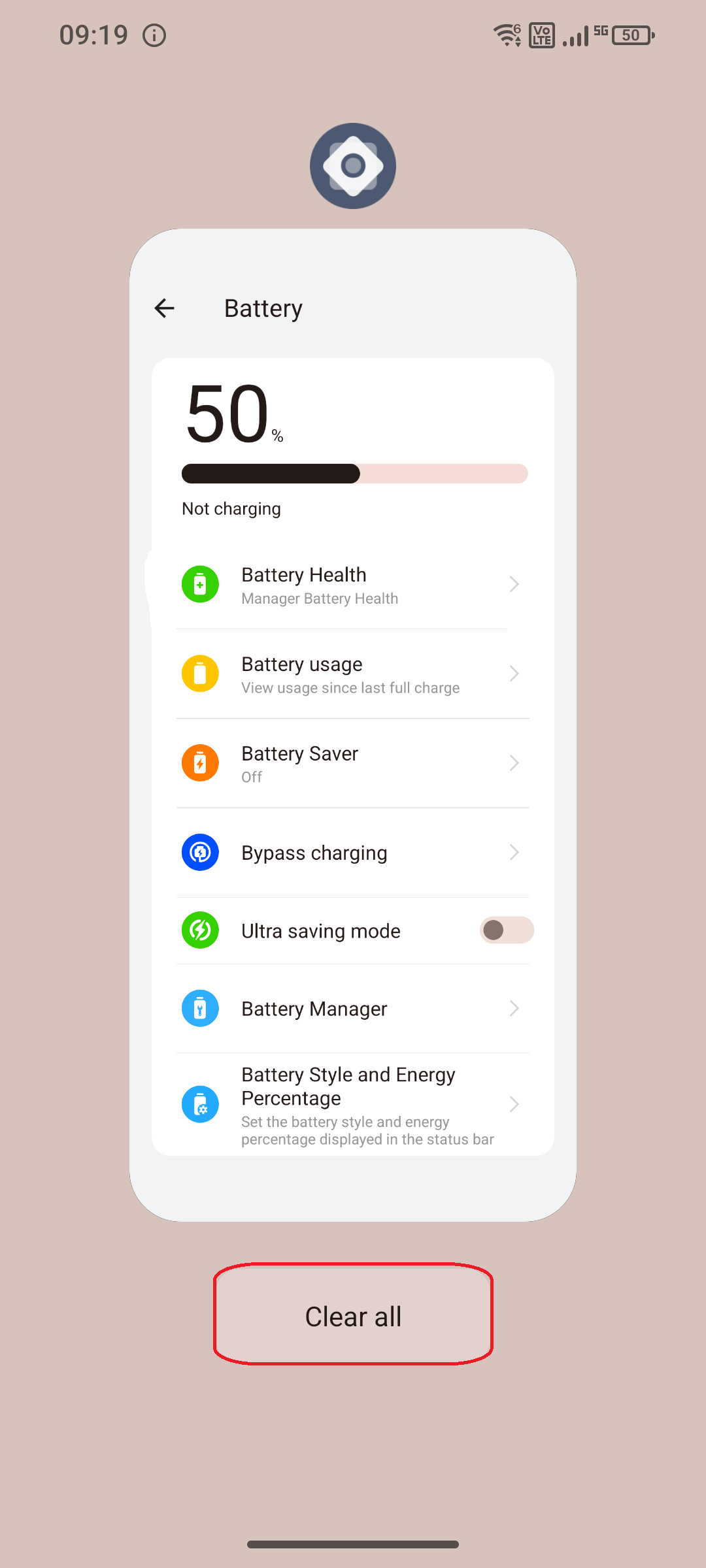 |
2. Reduce the screen brightness accordingly and turn off Bluetooth, GPS, WLAN, data connections, etc. when not in use. In addition, the energy-saving mode can be activated.
Android 13 | Android 14 | Android 15 |
 |  | 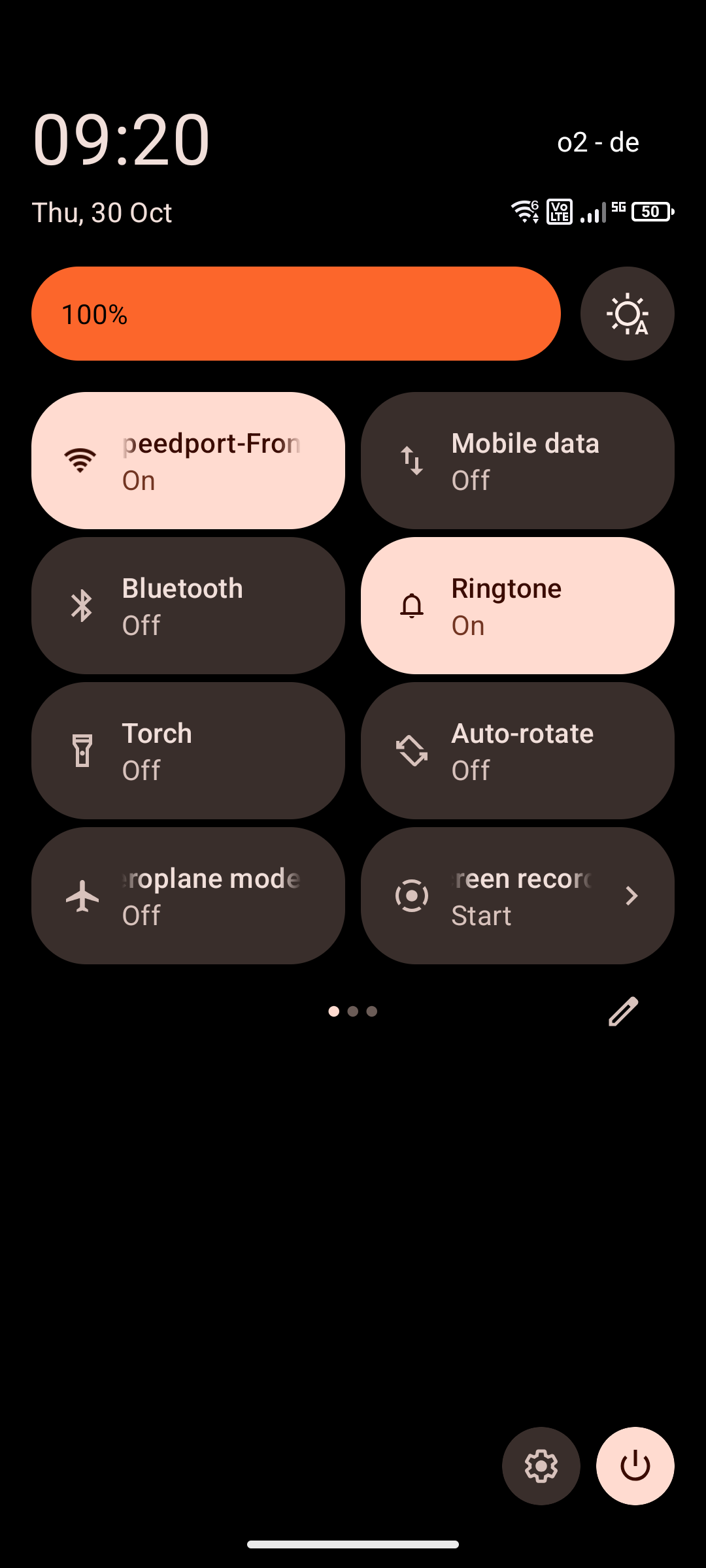 |
Charging process
The charging is based on intelligent monitoring of the battery status and control of the charging process according to predefined parameters.
This is intended to contribute to improved safety and service life of smartphone batteries. You can find out more about the Gigaset Battery Save Initiative at the following link: Gigaset Battery Save Initiative
As soon as the battery level reaches the set charging limit (70%/80%/90%), the smartphone starts to discharge.
The charging process is stopped until the battery level reaches the lower threshold, whereupon the smartphone is recharged.
The process where the battery discharges from the set charging limit to the threshold (5%) is described as charging hysteresis.
If no charge limit is set, the charge hysteresis is 15%.
Example:
Upper charge limit: 90% -> does not charge again until 84%
Upper charge limit: 80% -> does not charge again until 74%
Upper charge limit: 70% -> does not charge again until 64%
Charge limit deactivated (device charges up to 100%) -> does not charge again until 84%.
Hint:
If the device is charged when it is switched off, no charge limit or hysteresis applies. This means that the smartphone always charges up to 100% when it is switched off.
Setting of the battery charge limit:
| Android 13, 14 | ||
| 1. Open the settings. | ||
2. Battery | 3. Here you can activate/deactivate the battery charge limit. | 4. Charging limit value. |
5. Here you can set the load limit value. | ||
| Android 15 |
| 1. Open the settings. |
2. Battery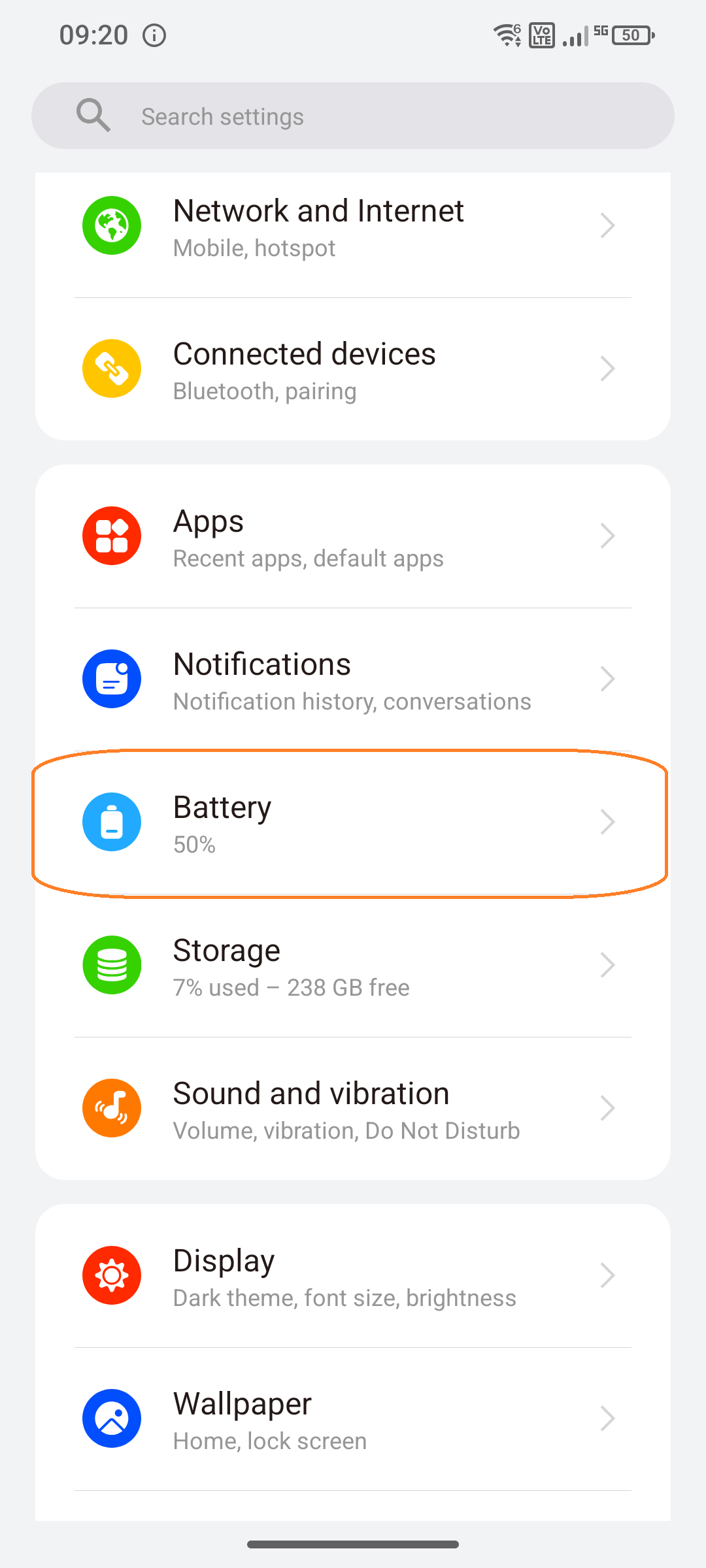 | 3. Battery Health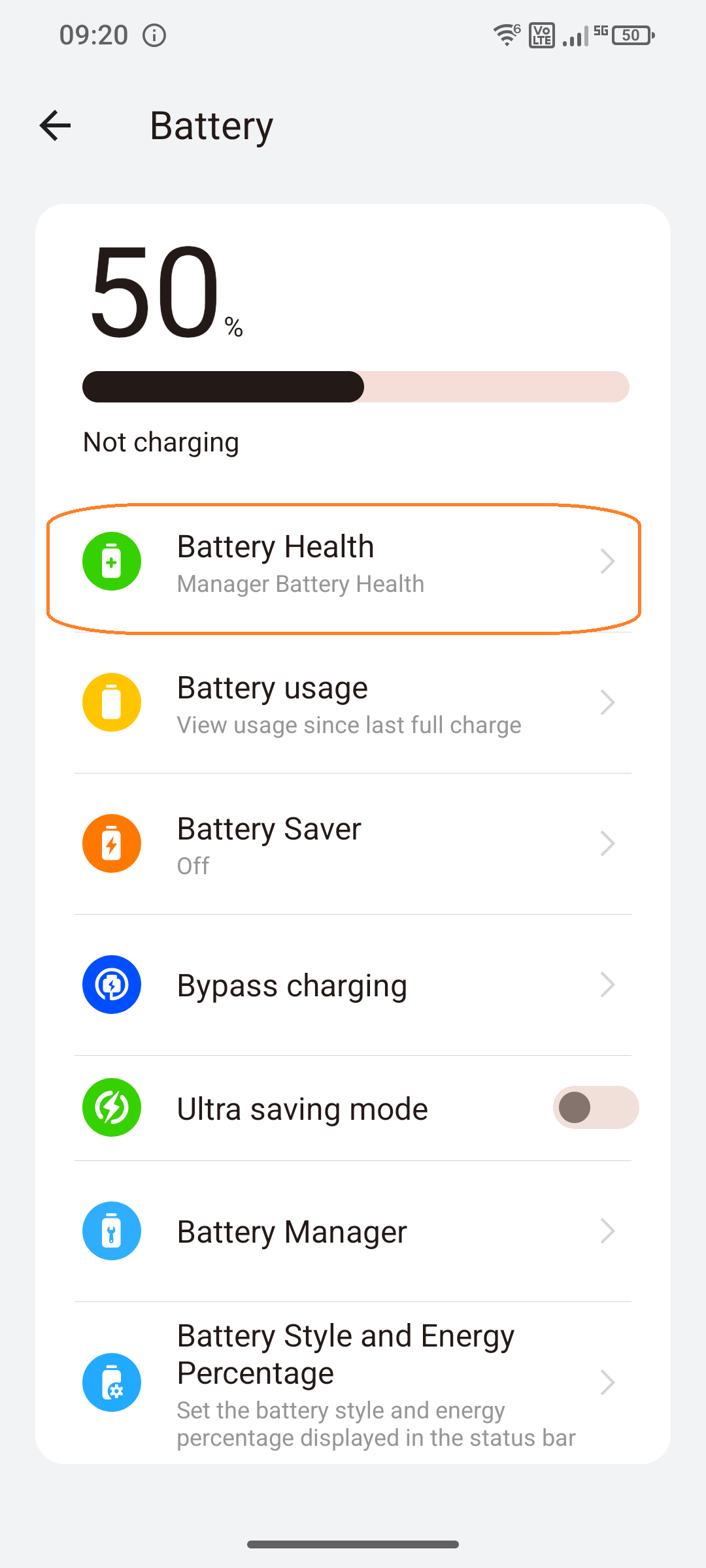 | 4. Here you can activate/deactivate the battery charging limit in the settings.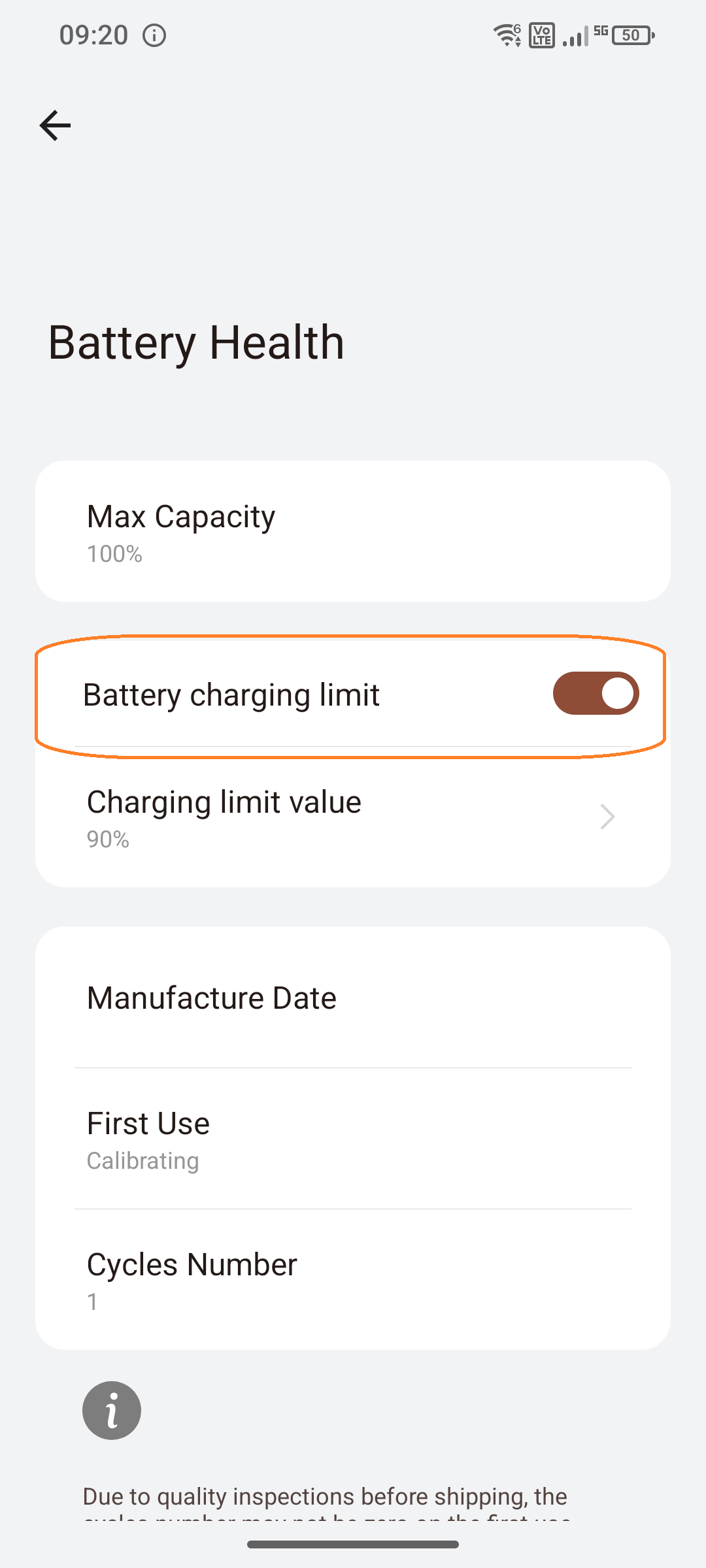 |
5. Charging limit value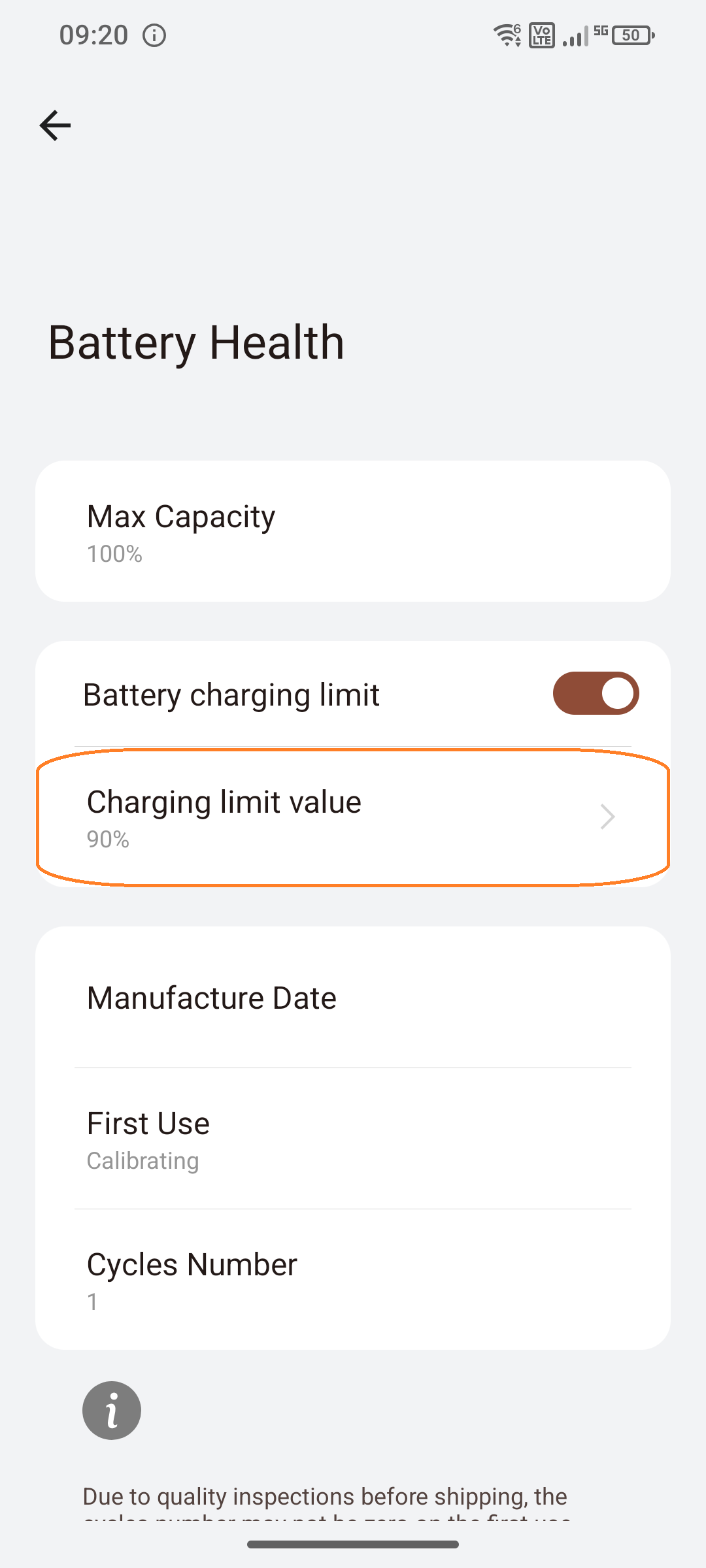 | 6. Here you can set the charging limit value.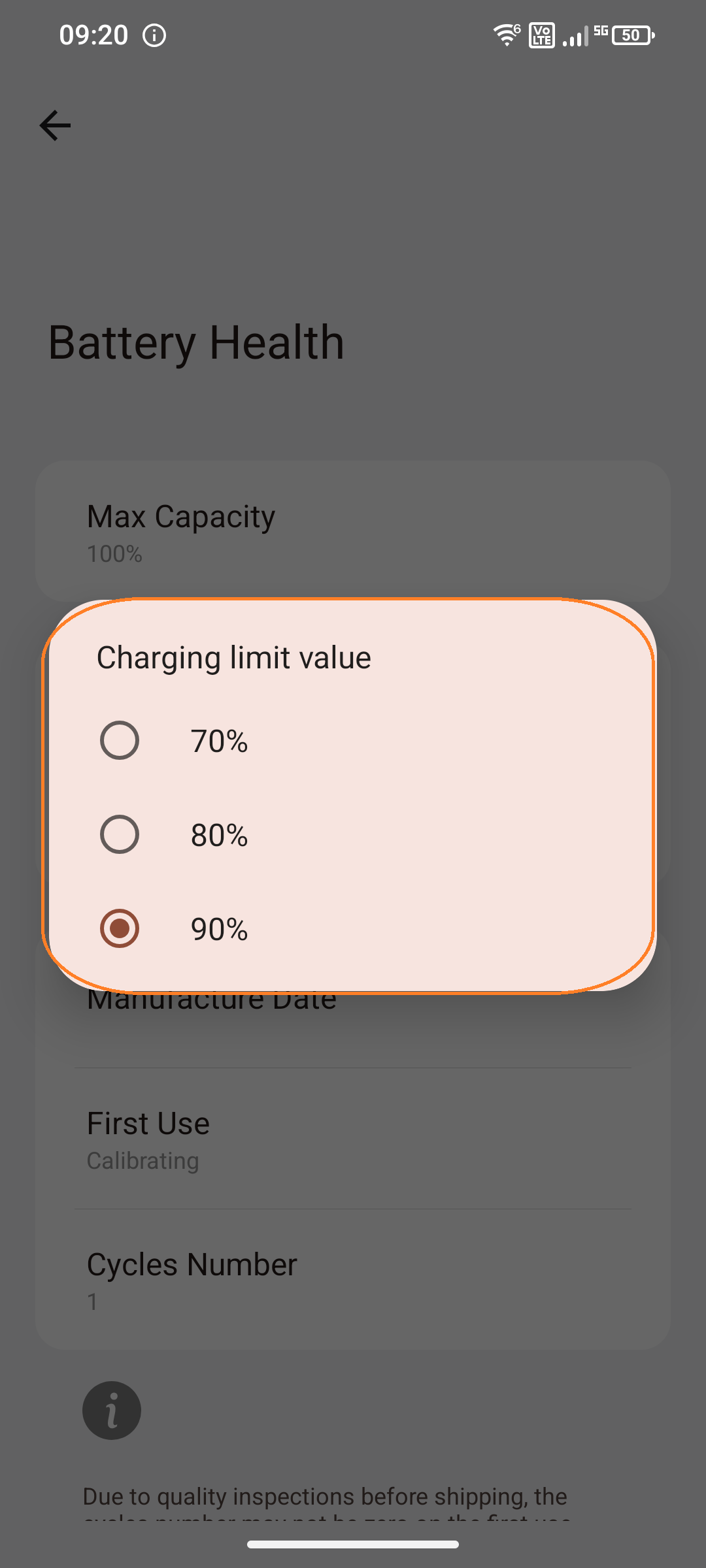 |
Cet article a-t-il été utile ?
C'est super !
Merci pour votre commentaire
Désolé ! Nous n'avons pas pu vous être utile
Merci pour votre commentaire
Commentaires envoyés
Nous apprécions vos efforts et nous allons corriger l'article